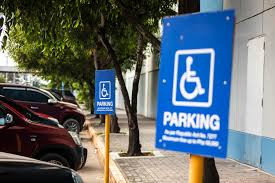Accessible parking enables everyone to navigate public areas safely and independently. More expansive spaces, clear signage, and proximity to entrances improve safety and access in urban areas. Here are some of the benefits of accessible parking in city planning:
Boosting Community Mobility
Accessible mobility infrastructure provides safe and convenient places where people with mobility impairments can gain access to workplaces, services, and public areas. Disability-accessible mobility infrastructure serves a range of users, from parents with strollers to the elderly who require spaces closer to entrances. Universal design for infrastructure eliminates barriers that deter independence, connecting all groups to civic engagement. Accessible mobility infrastructure enables cities to serve their citizens better.
Apart from providing room for assistive equipment, accessible mobility facilities reduce walking distances from rooms and building entrances. This benefits families with small children who are unable to handle long walks from distant drop-off areas. Inter-mingling car facilities with other mobility options, such as public transport, provides families with the potential to travel through means other than their own cars. Access planning makes places more family-friendly, benefiting everyone.
Reducing Traffic Congestion
Accessible mobility infrastructure reduces traffic congestion by directing drivers to available spaces.A lack of parking spaces makes cars drive around looking for a spot, which clogs up the streets. With smoother traffic flow, public roads accommodate vehicles more efficiently. Neighborhoods experience less congestion and cleaner air as a result of accessible infrastructure.
Accessible mobility infrastructure may help spur economic activity for customers and business complexes that are nearby. By making it easier for drivers to locate suitable spaces, they may become more likely to visit restaurants, recreation areas and stores that are difficult to park near. Vehicle facilities in business districts, combined with reserved spot systems, help manage traffic flow in busy city centers. Providing accessible mobility infrastructure supports community mobility and directly benefits local businesses by bringing more citizens into town centers.
Enhancing Safety
Densely populated urban streets should be accessed by wider parking spaces, clearly visible signs, and uncomplicated paths that pose less hazard to pedestrians. With easy accessibility of mobility facilities, people can easily walk to and from vehicles. Less traffic congestion also increases overall public safety. Car facility design with a view towards protecting citizens and vehicles is a component of safe city planning.
Real-time systems signal available spaces through mobile apps, reducing traffic caused by drivers looking for space. These applications allow users to locate and reserve space through their phones, making access easier in advance. Some systems also allow drivers to pre-reserve spots for a seamless experience. The technology connects planners, businesses, and citizens with accessibility-improving tools. Visionary planners will utilize the technology to transform cities beyond the physical environment.
Discover Accessible Parking in City Planning
Experts provide inclusive mobility infrastructure services that enhance movement across the city. Cities can engage with them to explore solutions that expand access points and support equal participation. Their approach integrates inclusive infrastructure into development planning, helping create connected communities. Disability-focused facilities link citizens with mobility challenges to public life and make city centers more welcoming to everyone. Explore expert parking solutions to learn practical ways of strengthening accessibility and mobility in cities.

